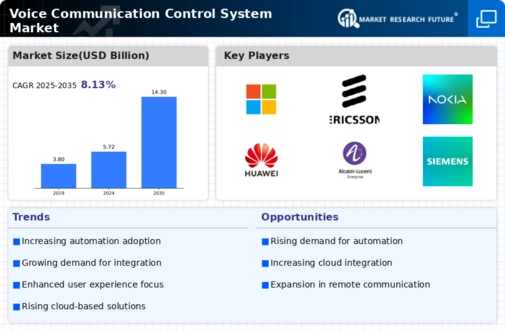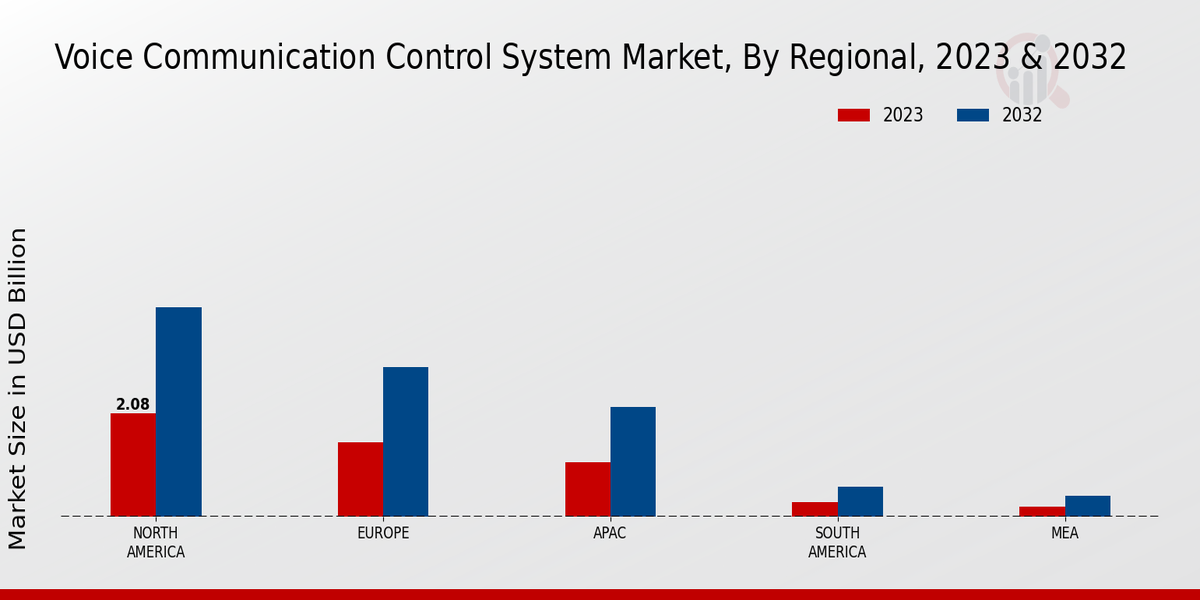Market Growth Projections
Growing Focus on Safety and Security
Safety and security concerns are driving the growth of the Global Voice Communication Control System Market Industry. In sectors such as public safety, transportation, and military operations, the need for secure and reliable communication systems is paramount. Voice communication systems equipped with encryption and secure channels are increasingly being adopted to mitigate risks associated with data breaches and unauthorized access. This heightened focus on security is likely to propel market growth, as organizations prioritize investments in communication systems that ensure the safety of personnel and sensitive information.
Rising Demand for Enhanced Communication
The Global Voice Communication Control System Market Industry is experiencing a notable surge in demand for enhanced communication solutions across various sectors. Organizations are increasingly recognizing the necessity for efficient and reliable communication systems to facilitate seamless interactions. This trend is particularly evident in industries such as aviation, maritime, and emergency services, where clear voice communication is critical. As a result, the market is projected to reach 5.72 USD Billion in 2024, reflecting a growing investment in advanced voice communication technologies that ensure operational efficiency and safety.
Technological Advancements in Voice Systems
Technological advancements play a pivotal role in shaping the Global Voice Communication Control System Market Industry. Innovations such as artificial intelligence, machine learning, and cloud-based solutions are transforming traditional voice communication systems into more sophisticated and adaptable platforms. These technologies enable features like voice recognition, automated responses, and enhanced security measures. The integration of such advancements is likely to attract a broader range of users, thereby expanding the market. As organizations seek to leverage these technologies, the market is expected to witness a compound annual growth rate of 8.71% from 2025 to 2035.
Expansion of Smart Cities and IoT Integration
The expansion of smart cities and the integration of Internet of Things (IoT) technologies are significantly influencing the Global Voice Communication Control System Market Industry. As urban areas evolve into smart cities, the demand for interconnected communication systems that facilitate real-time information exchange is rising. Voice communication systems are becoming integral to smart city infrastructures, enabling efficient management of resources and services. This trend is expected to contribute to the market's growth, with projections indicating a potential market size of 14.3 USD Billion by 2035, driven by the increasing adoption of smart technologies.
Increased Investment in Emergency Response Systems
Increased investment in emergency response systems is a critical driver of the Global Voice Communication Control System Market Industry. Governments and organizations are recognizing the importance of robust communication systems during emergencies, leading to enhanced funding and development of advanced voice communication solutions. These systems are essential for coordinating responses, disseminating information, and ensuring public safety. As a result, the market is likely to benefit from this trend, as stakeholders prioritize the implementation of reliable communication systems to improve emergency preparedness and response capabilities.






















